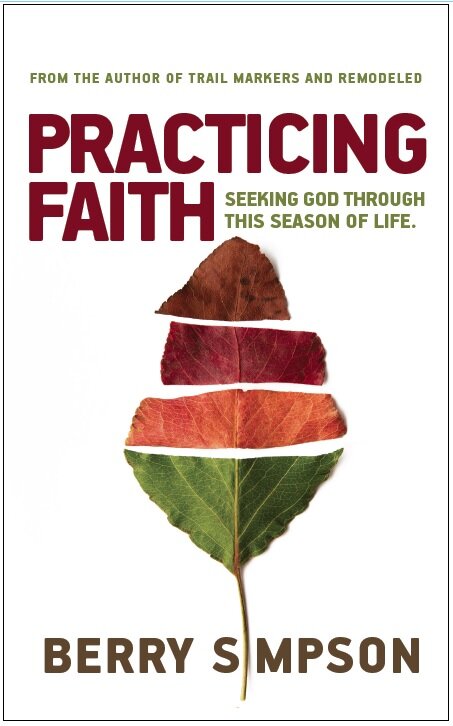Learning How to Run Again
/Wednesday morning, I went for what has become my regular, every-other-day, three-and-a-half-mile run through the neighborhood. It’s been one of the small handful of practices I’ve been able to stick to since being harbored at home. I’ve been able to alternate running one day and cycling the next day. Being outside has been even more important nowadays than before and moving down the road has been one of the few routines I’ve kept my grip on. It helps me forget that long list of projects I thought I’d tackle once I had plenty of time but have, well, failed at.
The thing about my runs is if you saw me, you’d probably think I was walking. The reason I know is because that’s the comment I hear most often, “Hey, I saw you walking down our street.”
It’s been that same conversation for a long time.
I first started running in May 1976 at age 19, having never been interested in sports or athletics, because I needed to impress a girl who had been dating a jock. Running was the easiest entry point into the athletic world, with the least skill or technique required.
But for all that, I’ve never been fast. And yet, despite my slow plodding pace, I ran a lot of miles, a lot of races, and multiple marathons. That is, until around 2004, when my knees started hurting.
Doctor Cochran’s diagnosis was osteoarthritis - the meniscus in both my knee joints was gone.
At first, I assumed running all those miles were the cause. It made sense that I had worn out my meniscus from overuse. But like any good engineer I did my research and learned the root cause was most-likely genetic. In fact, running had given me more additional years of movement rather than causing damage.
I tried a variety of things to keep running, including repeated visits to physical therapists at Seton Medical in Austin, modifying my gait and shoes, and regular injections of Synvisc in both knees. I learned that I couldn’t do much to repair, or even slow down, the damage; all I could do was manage the pain. So I took a lot of vitamin I (Ibuprofen) and kept moving. Eventually, my running deteriorated to a jog, and then to a hobble, to a shuffle, and eventually to a crooked bowlegged limp.
I had both knees replaced with titanium joints in 2015, and my life has been markedly better ever since. I’ve cycled thousands of miles, hiked up and down dozens of mountain trails, and run a bit. But even after five years I’ve never been able to run faster than a slow shuffle, or as my neighbors would say, walk, even with my new after-market knees.
* * * * *
I read a book of essays titled, I Was Told There’d Be Cake by Sloane Crosley, and she wrote of the time when she was misdiagnosed as having hemochromatosis, a too-much-iron-in-the-blood disease. Later, when she found out she wasn’t sick after all, she was a little sad. “I had myself an explanation for everything that had ever been wrong with me,” she wrote. “I wanted to hold my flaws close but controlled like a balloon tied to my wrist with a string. If anything went wrong, all I had to do was tug at the string and bring my explanation down for others to see. This is who I am, and this is why.”
The question we must ask ourselves is this: Do I want to get well?
Jesus asked this same question of a man who had been paralyzed for 38 years. Jesus found him lying by a pool of water, a place where blind, lame, and paralyzed people were left by their families. There was a tradition that when the water was stirred, the first person into the pool was healed. (John 5:1-9)
Jesus asked the man, “Do you want to get well?”
The man said, "Sir, I have no one to put me in the pool when the water is stirred up and someone else always steps down ahead of me"
Curiously, the man didn’t answer Jesus’ question. He started making excuses. Jesus didn’t ask him, “What are your problems? What makes your life so hard?” He asked, "Do you want to get well?"
This man had been sick so long he forgot about wanting to get well. All he could do was explain his limp.
Is it possible to live so long in injury that our bodies forget how to live without it? Is it possible to forget how good life can be? Or do we learn to enjoy limping? After all, it provides a convenient excuse to explain away poor performances.
I know this much: It’s possible to limp so long we make agreements with ourselves. As in, “Pain-free walking just isn’t for me,” or “I’m stuck in this lousy relationship but I’m used to it now,” or “I’m saddled with this addiction for the rest of my life, I should just get used to it.”
Too often we settle when we don’t have to,
* * * * *
Wednesday morning, I had brief stretches where I picked up the pace and felt like a real runner again. It was a gift from God. It was a reminder that my problem is less physical than mental. I have a lot more in me than my brain is willing to release.
Unlike the man lying beside the pool of water, I do want to get better. I have sixteen years of shuffling muscle-memory to push through, but now is the time to start.
What about you? What excuses are you holding on to?
“I run in the path of Your commands, for You have set my heart free.” Psalm 119:32







